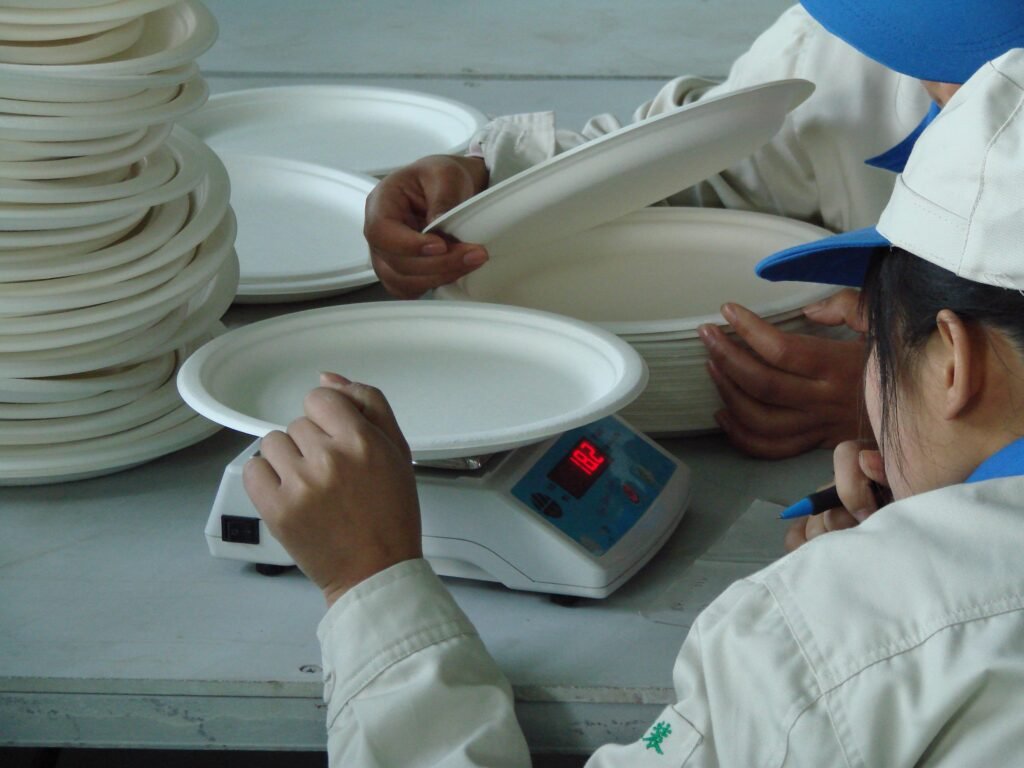Are you trying to choose the best type of tableware for your business? The decision can be daunting with so many options available. At HMZ Technology, we understand the importance of making an informed choice. Let’s compare bagasse, plastic, and paper tableware to help you decide.
Bagasse tableware is made from sugarcane residue. It’s eco-friendly, biodegradable, and compostable. Plastic tableware, while convenient, is notorious for its environmental impact. Paper tableware, on the other hand, is biodegradable but often lacks durability. Understanding the strengths and weaknesses of each can guide your decision.
Continue reading to discover which tableware best suits your needs.

What is Bagasse Tableware and Why Should You Consider It?
Bagasse tableware is derived from the fibrous residue left after extracting juice from sugarcane. This byproduct is abundant and renewable, making it a sustainable option. Bagasse tableware is sturdy, heat-resistant, and compostable within a few months.
Using bagasse reduces waste and environmental pollution. It requires less energy and water to produce compared to plastic, making it an eco-friendly choice for businesses aiming to reduce their carbon footprint.
Plastic Tableware: Convenience at a Cost?
Plastic tableware is known for its convenience and low cost. It’s lightweight, durable, and versatile. However, the environmental impact of plastic is significant. Plastic tableware can take hundreds of years to decompose, contributing to landfill waste and ocean pollution.
Moreover, the production of plastic relies heavily on fossil fuels, leading to greenhouse gas emissions. While plastic is practical for single-use, its long-term environmental costs are substantial.
How Does Paper Tableware Compare?
Paper tableware is another popular choice. It’s biodegradable and can be recycled, making it more environmentally friendly than plastic. However, paper tableware often lacks the durability of plastic or bagasse, especially when used with hot or greasy foods.
Producing paper tableware also involves cutting down trees, which can impact forests if not managed sustainably. While paper is a better option than plastic, it still has limitations regarding durability and environmental impact.

Bagasse vs. Plastic: Which is More Sustainable?
When comparing bagasse and plastic, sustainability is a key factor. Bagasse is biodegradable and compostable, breaking down within months and enriching the soil. Plastic, however, persists in the environment for centuries, contributing to pollution.
Bagasse production uses agricultural waste, reducing the need for new resources. Plastic production, conversely, relies on non-renewable fossil fuels. From an environmental perspective, bagasse is a clear winner.
Bagasse vs. Paper: Which Offers Better Performance?
Comparing bagasse to paper, we see that both are biodegradable and environmentally friendly. However, bagasse outperforms paper in durability and heat resistance. Bagasse tableware can handle hot and greasy foods without leaking, while paper may not be as reliable.
Bagasse also decomposes faster than paper, which can sometimes require special conditions for effective composting. For businesses seeking a robust and eco-friendly option, bagasse stands out.
Frequently Asked Questions
What is bagasse?
Bagasse is the fibrous residue left after extracting juice from sugarcane. It is an abundant and renewable resource used to make eco-friendly tableware.
How long does it take for bagasse tableware to decompose?
Bagasse tableware decomposes within 90 days in a composting environment, returning nutrients to the soil without leaving harmful residues.
Is bagasse tableware safe for food use?
Yes, bagasse tableware is safe for food use. It does not contain harmful chemicals and does not leach toxins into food.
Can bagasse tableware be used for hot and cold foods?
Bagasse tableware is versatile and can be used for both hot and cold foods. It is microwave-safe and can handle hot liquids and foods without degrading.
How should I dispose of bagasse tableware?
For optimal environmental benefits, dispose of bagasse tableware in a composting environment. If composting is not available, check local recycling and disposal guidelines to ensure proper handling.

Conclusion
In summary, bagasse tableware offers a sustainable and robust alternative to plastic and paper. Its renewable nature, coupled with its biodegradable and compostable properties, makes it ideal for eco-friendly food packaging. At HMZ Technology, we are committed to providing high-quality, customized bagasse tableware to help our clients transition to more sustainable solutions.
By choosing bagasse, businesses can significantly reduce their environmental impact and meet the growing demand for sustainable practices. Every small change counts in the fight against environmental degradation.
Let’s embrace bagasse tableware and take a step towards a more sustainable lifestyle.

